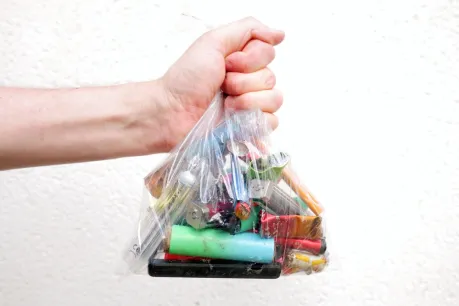Burn Injuries Caused by Defective Products: Know Your Options

Injured?
When you purchase a product, whether it’s a kitchen appliance, a car, or a child’s toy, you expect it to be safe.
Unfortunately, that’s not always the case, and defective products that were brought to market by negligent companies can leave consumers badly injured by their dangerous flaws.
One of the most painful and life-altering outcomes of a defective product is a burn injury. These injuries can range from minor to catastrophic, and the physical, emotional, and financial toll can be immense.
At Morgan & Morgan, we’ve represented countless individuals who were injured because a product was not designed, manufactured, or labeled safely. If you or a loved one has suffered a burn injury due to a defective product, you may be entitled to compensation, and we can help you fight for it. Hiring one of our lawyers is easy, and you can get started in minutes with a free case evaluation.
What Is a Burn Injury?
A burn injury is damage to the skin or other tissues caused by heat, electricity, chemicals, radiation, or friction. The severity of a burn is categorized by degrees:
- First-degree burns: Affect only the outer layer of skin, causing redness and pain.
- Second-degree burns: Affect both the outer and underlying layer of skin, causing swelling, blistering, and severe pain.
- Third-degree burns: Penetrate the full thickness of the skin and destroy nerves, often leading to numbness and permanent scarring.
- Fourth-degree burns: Extend into muscles, tendons, or bones and are often life-threatening.
Even so-called “minor” burns can result in serious complications, including infection, chronic pain, and psychological trauma.
How Defective Products Cause Burn Injuries
A defective product can cause burn injuries in several ways. These cases typically fall under one or more of the following categories:
Defective Electrical Products
Faulty electrical wiring, overheating batteries, or short circuits in products such as:
- Cell phones and laptops
- Power tools
- Hair dryers or curling irons
- Electric blankets or heating pads
These items can catch fire or explode, causing direct contact burns or even house fires.
Faulty Appliances
Kitchen appliances like stoves, toasters, coffee makers, and microwaves can overheat or leak flammable gas or liquids. If the product lacks proper safety mechanisms or malfunctions due to poor manufacturing, the risk of burns increases dramatically.
Flammable Clothing and Fabrics
Children’s pajamas, Halloween costumes, and household items such as mattresses and curtains must meet strict flammability standards. If these products catch fire too easily or burn too quickly, manufacturers can be held liable for any resulting injuries.
Exploding Products
Some of the most devastating burn injuries occur when products explode, often due to a buildup of pressure, faulty batteries, or chemical reactions. Common culprits include:
- E-cigarettes and vape pens
- Spray paint cans and aerosol products
- Pressure cookers (e.g., Instant Pots)
- Car gas tanks or fuel systems
These explosions can cause both thermal and chemical burns.
Defective Auto Parts
When a vehicle malfunctions due to a defective fuel line, airbag deployment issue, or electrical system failure, the result can be a fiery crash. Victims may suffer burns from the fire itself, hot metal, or leaking chemicals.
Types of Product Defects
Product liability cases often fall into one of three categories:
Design Defects
These are flaws in the product's blueprint,meaning that every product made is inherently dangerous. An example could be an electric blanket designed without a temperature control that overheats.
Manufacturing Defects
These occur during the production process and may only affect some units. An example could be a pressure cooker that explodes because the safety valve wasn’t installed correctly on a few models.
Failure to Warn
Also known as marketing defects, these happen when the product lacks adequate instructions or warnings. For instance, a cleaning product that causes chemical burns but doesn’t warn users to wear gloves.
Common Products That Have Caused Burn Lawsuits
E-Cigarettes & Vape Pens
Lithium-ion batteries in vape devices have exploded in users’ faces, pockets, and hands, causing severe burns and disfigurement. Several lawsuits have been filed against device makers and battery manufacturers.
Instant Pots & Pressure Cookers
When pressure cookers malfunction, they can cause scalding burns from steam or explode entirely. Defects may include faulty lid seals or pressure-release valves.
Electric Blankets & Heating Pads
Overheating elements or a lack of automatic shut-off features can cause these devices to ignite or burn skin during sleep.
Hair Tools
Hair dryers, curling irons, and flat irons can overheat or cause electric shocks. If they lack proper insulation or temperature control, serious injuries can result.
Defective Vehicles
From exploding gas tanks to malfunctioning airbags that catch fire, cars with design flaws can cause massive burn injuries. The Takata airbag recall is a well-known example.
Burn Injury Complications
Burn injuries are some of the most medically complex and emotionally traumatizing injuries a person can suffer. Victims may require:
- Skin grafts or reconstructive surgery
- Amputation
- Physical and occupational therapy
- Psychological counseling
- Long-term pain management
Burn injuries can also lead to:
- Infection
- Permanent scarring or disfigurement
- Emotional trauma, including PTSD and depression
- Loss of income or inability to work
Who Is Responsible for Defective Product Burns?
Under product liability law, multiple parties may be held responsible when a defective product causes harm:
Manufacturers
The company that made the product can be liable if:
- The design was inherently unsafe
- Manufacturing defects caused the danger
- The product lacked adequate safety warnings
Retailers or Distributors
Stores that sell defective products can also be held responsible, particularly if they failed to remove a known dangerous item from their shelves or didn’t provide proper warnings.
Third-Party Component Makers
Sometimes a product is assembled with parts made by a different company. If a defective battery, for instance, causes a phone to catch fire, the battery manufacturer may be liable.
What Compensation Can You Recover?
If you’ve suffered burn injuries from a defective product, you may be entitled to significant compensation, including:
- Medical expenses (past, current, and future)
- Lost wages and diminished earning capacity
- Pain and suffering
- Emotional distress
- Scarring or disfigurement
- Punitive damages (if the manufacturer acted with gross negligence)
In wrongful death cases, families may recover funeral expenses, loss of companionship, and loss of financial support.
Burn Injury Lawsuits and Class Actions
Some burn injury claims become mass torts or class action lawsuits if many people are injured by the same defective product. These lawsuits can:
- Help plaintiffs share resources and lower legal costs
- Create stronger pressure on manufacturers
- Lead to significant settlements or verdicts
Morgan & Morgan has a dedicated class action team that handles mass torts against major corporations. If you were injured by a widely sold product, such as an Instant Pot or vape pen, you may be eligible to join a larger suit.
What to Do if You’ve Been Burned by a Defective Product
Step 1: Seek Immediate Medical Attention
Burn injuries can worsen quickly. Prompt care can prevent complications like infection and scarring.
Step 2: Preserve the Product
Don’t throw away the defective product, packaging, or receipt. These are critical pieces of evidence.
Step 3: Document Everything
Take photos of your injuries, the product, and the scene where the injury occurred. Keep all medical records and receipts.
Step 4: Contact an Experienced Product Liability Attorney at Morgan & Morgan
The sooner you talk to a lawyer, the better your chances of building a strong case.
How Morgan & Morgan Can Help
Morgan & Morgan is America’s largest personal injury law firm, and we’ve secured over $25 billion for our clients. When you work with us, you’re gaining a team of experienced product liability lawyers, investigators, and medical experts who know how to fight back against big corporations.
We believe everyone deserves justice, regardless of their financial situation. That’s why we work on a contingency fee basis, which means the Fee Is Free®. You pay nothing upfront, and we only get paid if we win your case.
Don’t wait. Contact us today for a free, no-obligation case evaluation to learn more about your legal options.

We've got your back
Injured?
Not sure what to do next?
We'll guide you through everything you need to know.

